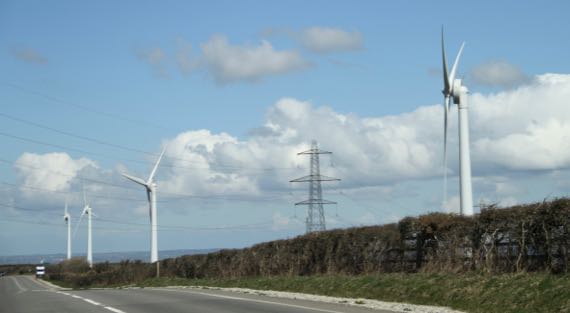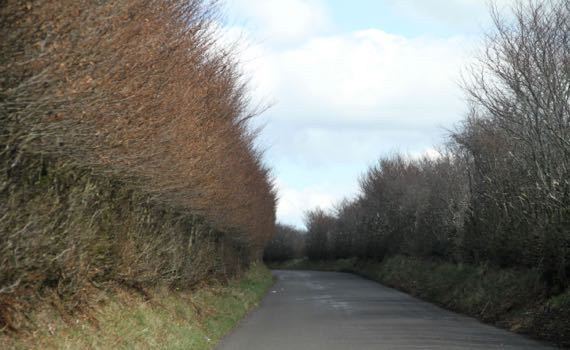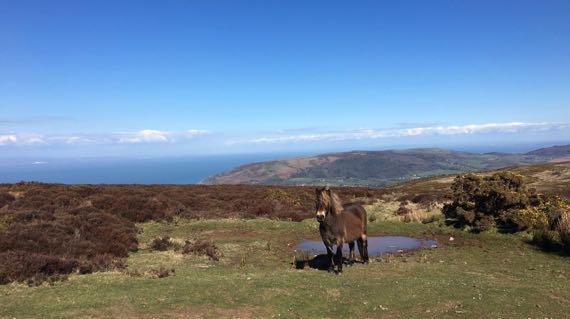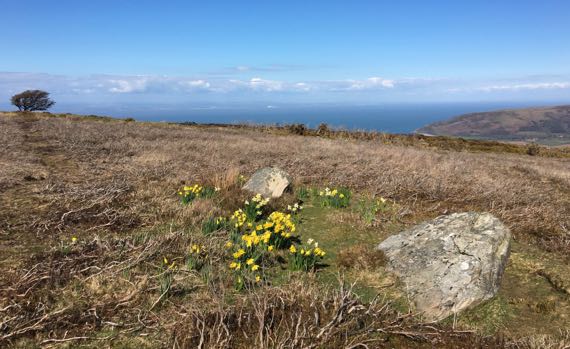Tintagel, Exmoor peek
Sunday, 17 April 2016

Whatever you think you know about Tintagel Castle, it’s probably wrong. The King Arthur association, no chance. The rocky almost-island has plenty of ruins, mostly dating to three periods, the Dark Ages (here AD 500–600s, roughly), the 1200s, and to Victorian times. The DA ruins are pretty humble and meager. While the landform is defensible, there’s little else to recommend it—not much area to grow food and everything’s rocky, although the harbor situation for small watercraft is workable if the seas are relatively calm (says this landlubber). The “castle” dates to about 1230, including the ruins of a Great Hall and Chapel (the most recognizable architecture). The Great Hall had to be modified as part of it slid into the sea not long after it was constructed. The rest of what commonly constitutes a castle—not here or only small bits. The Victorian modifications look like versions of a folly to me….

Here’s the Great Hall…. Both these pictures show Tintagel’s most salient feature: elevation changes. This is rough terrain. Note that the bridge below (far below) my shadow is steps—not flat. See: terrain!
We were glad it was only breezy (and not windy) and not rainy (and slick underfoot) during our Tintagel visit. BTW, that big, chunky, rectangular building on the far hill is a hotel. Great location for them; bit of an eyesore from Tintagel.

Wind generators…all busy generating—none still.

And on Exmoor (our last moor, I think), elaborate hedging…and the secret of how they’re made was revealed to us along this stretch—no photos; too fascinating to snap, just looked. So, here’s the secret to that dense vegetation. About 10cm very upright trees in the existing hedge are cut in a not-quite-vertical slice, so that the top is still attached to the root. Then, the branches are sliced off the tops, which are laid down along the top of the existing hedgerow (two parallel rows), and tied together to keep them from springing back up or shifting out of alignment. They must subsequently send up new verticals, making the dense hedgerows we see, along with the horizontals below the verticals.
The hedging on the left has been trimmed mostly I think to give drivers better line of sight, although also to keep branches from brushing vehicles.

Exmoor pony. That’s Wales on the other side of Bristol Channel, below the line of clouds. We go there tomorrow.

Since it’s a moor, standing stones, right? These two are leaners at this point. And someone’s planted daffodils. We have been enjoying daffodil and primrose season in southern England. We are so lucky with the weather (fingers crossed for the coming days).